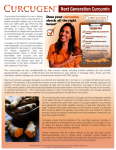Danisco breaks down probiotics market

Drawing on its own market research, as well as data from Nutrition Business Journal, Euromonitor and Mintel, the Danish ingredient firm estimates the global probiotic supplement market to be worth around $1.5bn.
The market is concentrated in three major regions – Asia Pacific, North America, and Europe – but there are clear signs that it is the newer parts of these markets that have the most potential for growth.
Probiotic supplement sales in North America and Eastern Europe are currently logging a growth rate of 25 percent, while the larger and more mature markets of Asia Pacific and Western Europe are growing at 5 percent and 8 percent respectively.
This compares to the 5 percent growth rate of the global supplements market as a whole, which is worth around $68bn.
The figures were presented by Danisco last week at the SupplySide East trade show in Secaucus, New Jersey, as part of a general overview of the use of probiotics for health.
Health claims balance
Gastrointestinal health remains the most popular use for probiotics, accounting for 56 percent of health benefit claims made on products introduced into the market between 2000 and 2007.
Out of these, the largest number (37 percent) were made for healthy digestion. ‘General’ gut health claims were made on 30 percent of products in this category, while 23 percent of claims related to gut flora and pathogens. Healthy transit and nutrient absorption were the subject of 6 and 4 percent of claims respectively.
Immune health claims appeared on 24 percent of all probiotic products launched during the seven year period. Out of these, 97 percent made general immune health claims, while 3 percent claimed allergy benefits.
“A new opportunity would be to demonstrate the effect of probiotics formulation on more specific immune health conditions,” said Connie Sindelar, probiotic format development manager at Danisco.
Delivery challenges
Sindelar highlighted some key challenges that probiotic product manufacturers need to keep in mind when developing their formulations.
When introducing the bacteria into food items, applications with intermediate water levels are the most difficult to work with, and could end up compromising the stability of probiotics throughout the products’ shelf life. These applications include bars, confectionery and chocolate.
“When delivering freeze dried probiotics in an intermediate moisture food, that free water enables them to become live and become active from their freeze-dried state; they wake up and they find that they have no food and that they’re not in an environment that is ideal for them and they end up dying,” said Sindelar.
Ultimately, this could mean that the products do not deliver the expected levels of probiotics throughout their shelf-lives, she explained.
Another challenge that manufacturers must be aware of is the impact that capsule shells used for dietary supplements could have on the survival of the probiotics.
“Capsule shells have a water activity on their own so the type of capsule that you’re choosing when you’re making your product can have an effect on probiotic survival throughout shelf life,” she said.
To hear more, click here.















